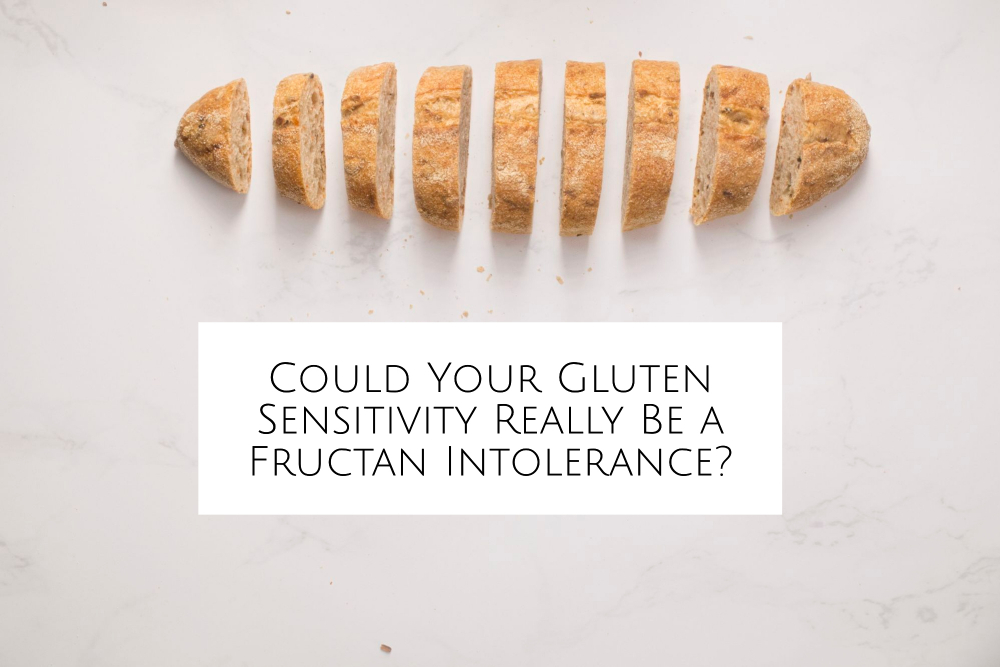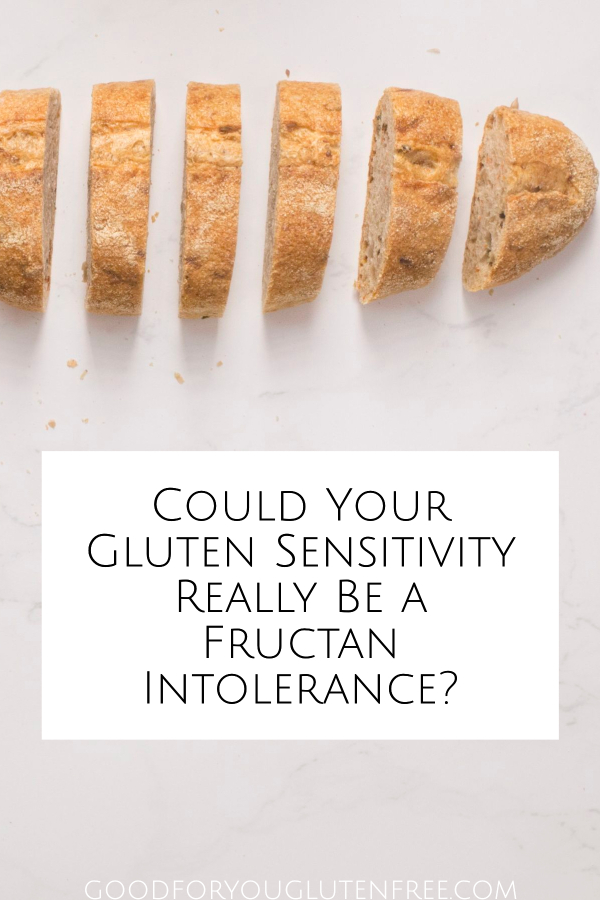
There is a lot of chatter today about FODMAPS and fructans, and many people are now wondering if they have a fructan intolerance vs. gluten intolerance. In this post, I define a fructan intolerance as well as discuss why gluten intolerance and fructan intolerance often become confused, and how you can figure out exactly what is ailing you most. Please read my disclaimers.
Many people with self-diagnosed gluten sensitivity might actually have a fructan intolerance instead according to new research published in Gastroenterology in October 2017.
Researchers found, in a randomized, double-blind, placebo-controlled crossover study of individuals with self-reported non-celiac gluten sensitivity, that fructans induced bloating and other gastrointestinal symptoms as measured by the gastrointestinal symptom rating scale.
What are Fructans?
Before we get more into the details of the study, let’s discuss fructans first.
A fructan is a carbohydrate found in wheat and some vegetables. Fructans are oligo- or polysaccharides that include short chains of fructose units. (Fructans comprise the “O” in FODMAPs, which stands for fermentable oligosaccharides, disaccharides, monosaccharides, and polyols.)
What you need to know is that humans lack the digestive enzymes needed to break down oligo- or polysaccharides, so humans only absorb 5 – 15 percent of the fructans they consume and the rest is carted off to the colon to be naturally fermented, and which can lead to gas and other digestive woes in some people.
What Foods Contain Fructans?
Fructans are most commonly found in products containing or made from wheat, such as breads, pasta and couscous.
They are also found in certain vegetables such as onions, shallots, scallions, garlic, Brussels sprouts, cabbage, broccoli, pistachio, artichoke, inulin (extracted from the chicory root). Fructans are also found in barley.
High fructan foods to avoid include:
Breads/Grains:
- Barley
- Rye
- Wheat
- Spelt
Vegetables:
- Artichokes
- Brussel sprouts
- Cabbage
- Fennel
- Garlic
- Onions (including shallots and leeks)
- Peas
Fruits:
- Grapefruit
- Nectarines
- Bananas
- Watermelon
- Peaches
Nuts/Seeds:
- Almonds
- Cashews
- Pistachios
Legumes:
- Chickpeas (dried)
- Lentils (dried)
- Beans (dried)
- Soybeans
Other:
- Some Coffees and Teas
What Did Researchers Find?
Researchers at Oslo University Hospital in Norway conducted a double-blind crossover challenge for 59 individuals on a self-instituted gluten-free diet. Researchers ruled out and excluded participants with celiac disease.
Participants were randomly assigned to groups placed on a seven-day diet containing one of the following ingredients:
- Gluten (5.7 g)
- Fructans (2.1 g)
- Placebo
Participants waited seven days after their first eating challenge, and then crossed over into another group until they completed all three challenges (gluten, fructan, and placebo). Their symptoms were measured using the gastrointestinal symptom rating scale used for measuring irritable bowel syndrome.
Researchers found a significant difference in how each challenge affected each participant. Here’s what they found:
- 13 participants experienced the highest score of gastrointestinal symptoms after consuming gluten
- 24 participants had the highest score after consuming fructans
- 22 participants had the highest score after consuming the placebo
Moreover, researchers found that there was no difference in scores on the gastrointestinal symptom rating scale between the gluten and placebo groups.
This study suggests that fructans, more so than gluten, were more likely to induce symptoms. It suggests that those without a diagnosed gluten sensitivity may find relief from their symptoms by avoiding all fructans vs. only gluten.
Related Reading: Gluten Sensitivity vs. Celiac Disease
Should a Fructan Intolerance be Treated with a Gluten-Free Diet?
While fructans and gluten co-exist in many foods, a better protocol for someone with a fructan intolerance might be to avoid fructan, not gluten.
That said, many gluten-free grains are okay for those following a FODMAP diet and who are avoiding fructans, so that is why the gluten-free diet can offer relief to someone with a fructan intolerance.
Remember, if you’re switching from a gluten-free diet to a low-FODMAP diet, you would still need to avoid gluten-containing grains, such as wheat, rye, and barley, which are high-FODMAP foods.
However, you might be able to enjoy something like sourdough bread because the long fermentation process removes much of the fructan, making it a low-FODMAP food.
Related Reading: Is Sourdough Bread Gluten-Free?
Also, small amounts of unprocessed or processed wheat bran are okay on a fructan elimination diet (it is NOT okay if on a gluten-free diet), and a low fructan diet can include consumption of up to one-half cup of wheat or gluten-free pasta.
Please note that if you have celiac disease or diagnosed gluten sensitivity, you should continue to eat 100 percent gluten free.
If you are unsure if you suffer from gluten sensitivity or fructan intolerance, or perhaps both, please consult your doctor or nutrition coach to not only get tested but also to properly transition your diet.
See the full study here.

Leave a Comment